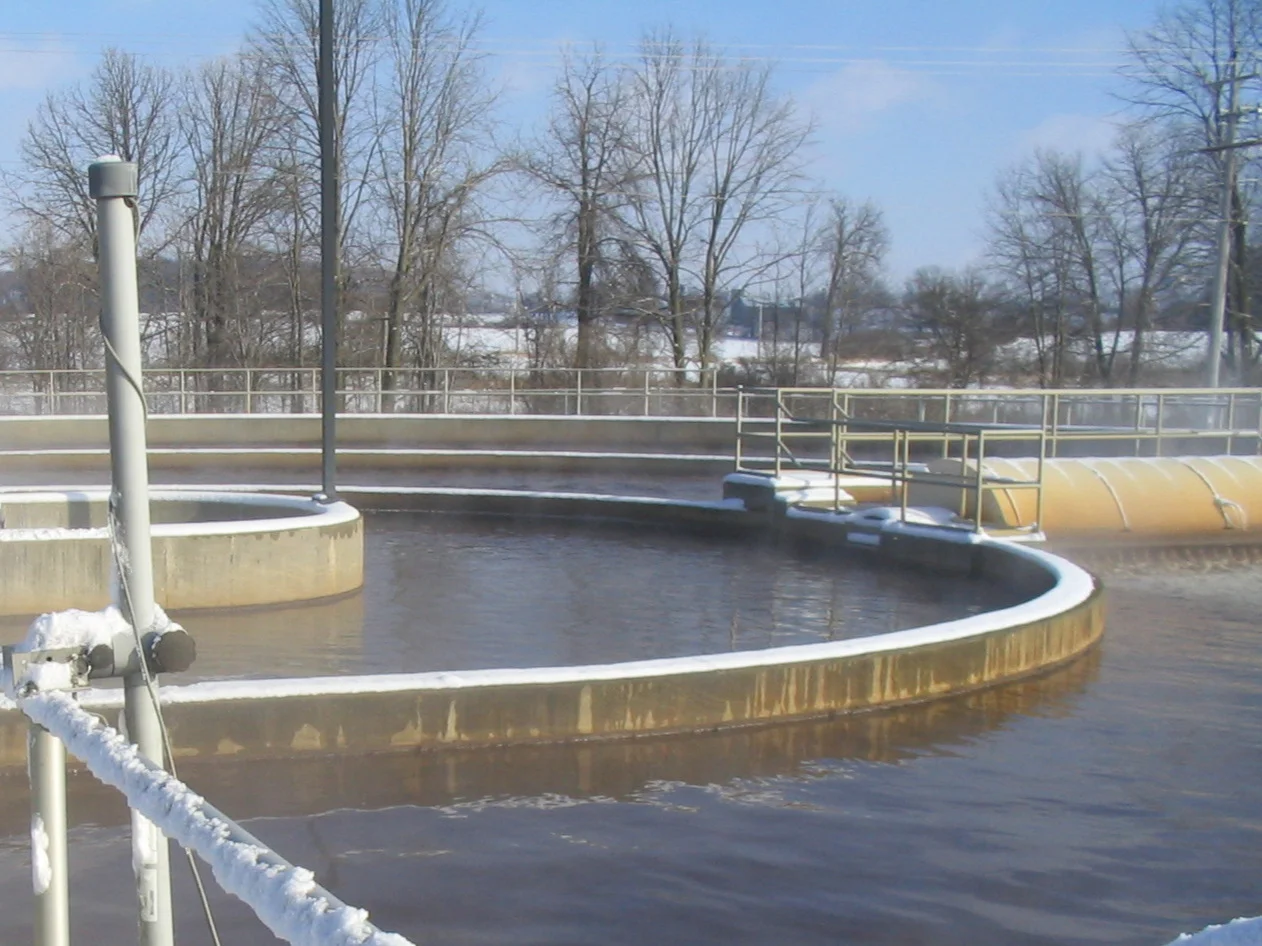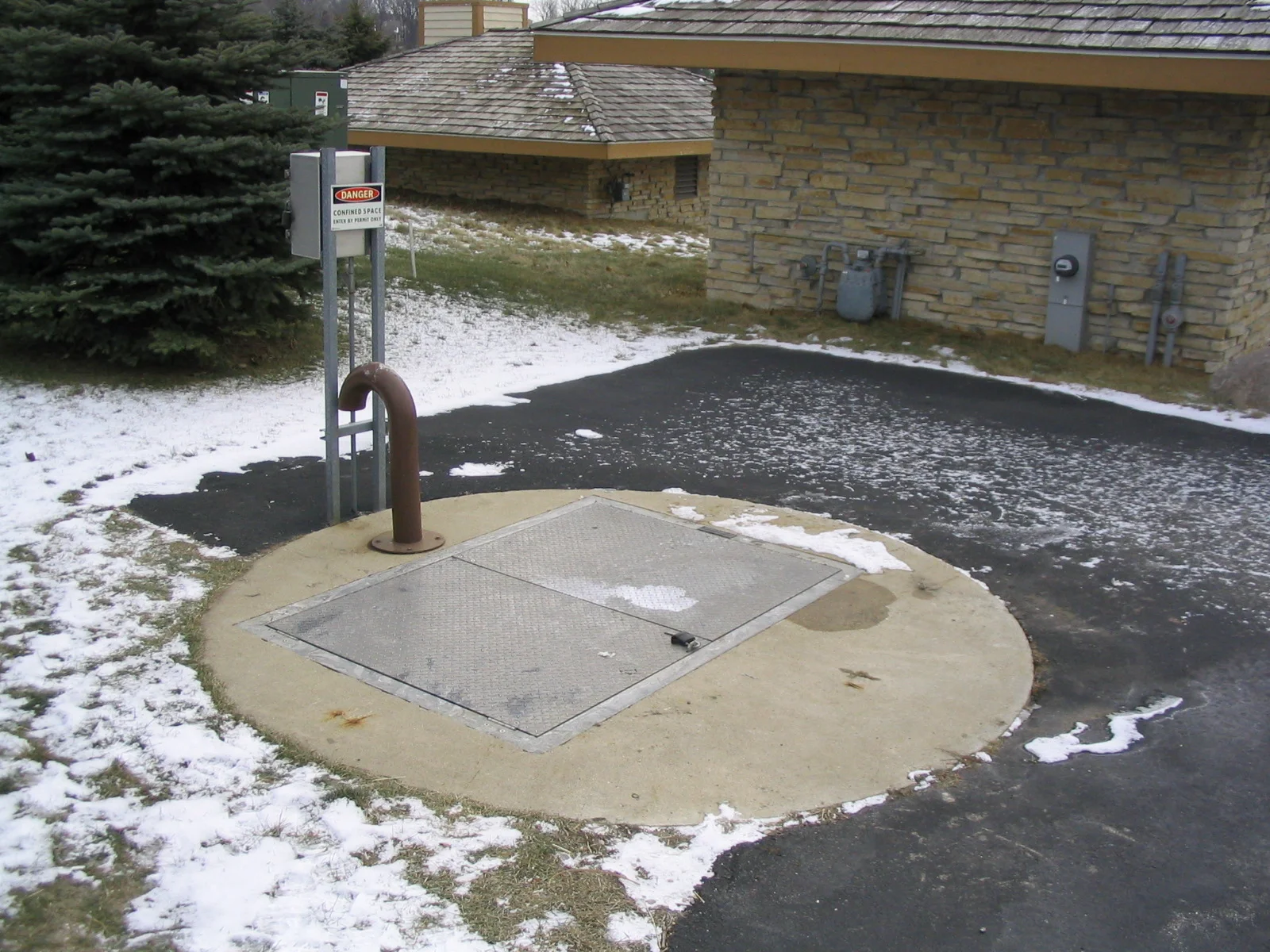Facing stricter phosphorus limits, the Stephensville Sanitary District teamed up with R/M and the Wisconsin Water Quality Clearinghouse to find an innovative solution. Through Water Quality Trading, they’re balancing phosphorus levels, reducing chemical use, and saving costs. Discover how this collaboration is setting a new standard for phosphorus reduction.
The City of Franklin constructed a new interceptor to address increased development but soon faced severe odor complaints. To combat this niche issue, a multi-phase approach was implemented to effectively mitigate odors, allowing the interceptor to operate efficiently for the community.
Federal standards for per-and polyfluoroalkyl substances (PFAS) for public drinking water systems were updated on April 10, 2024, including 4.0 ppt for PFOA and PFOS compounds. The upcoming PFAS threshold for municipal action will be significantly lower. Learn what these changes mean for your municipality.
Installing filters for phosphorus removal has proven to be an effective way to meet the Water Quality-Based Effluent Limits (WQELS) for effluent total phosphorus. Consideration should be given to identify potential strategies to fit filters in an existing hydraulic profile. Learn more about best practices when considering the addition of pumping equipment.
Sanitary sewer lift stations are critical to a municipality’s infrastructure to maintain a reliable collection system. There are multiple components for lift stations that should be reviewed and assessed intermittently to make sure a station operates efficiently and effectively with redundant and back-up systems. Learn about the electrical and control components that require intermittent assessments to run efficiently.
Total nitrogen (TN) effluent limits for wastewater treatment facilities (WWTF) in Wisconsin are being considered by the Wisconsin Department of Natural Resources (WDNR). Some WWTFs that do not denitrify now may have to optimize their processes to get more denitrification. Learn what this means for your municipality and how you should start planning for it.
Two common forms of perfluoroalkyl and polyfluoroalkyl substances (PFAS) are now scheduled to become designated as “hazardous substances” and be subject to the federal Comprehensive Environmental Response, Compensation, and Liability (CERCLA) Act in the fall of 2023. Learn more about the potential implications of these changes.
Since the state of Wisconsin passed legislation that changed the standards for phosphorus in surface waters, wastewater treatment facilities (WWTFs) have been preparing for increasingly stringent effluent requirements for total phosphorus (TP). Phosphorus filtration can help your municipality significantly reduce its TP effluent concentration and comply with the updated TP effluent requirements. Learn about the various types of phosphorus filters available, how they work, and what the advantages and disadvantages are for each system, so you can make the right choice for your WWTF.
Variable frequency drive (VFDs) can greatly improve efficiencies when used in pumping stations and aeration systems in wastewater treatment facilities.
Learn how the City of Columbus uses VFDs to significantly decrease power demands and reduce energy costs at their WWTF.
America’s Water Infrastructure Act (AWIA) requires municipal water systems serving more than 3,300 people to complete a Risk and Resilience Assessment and develop an Emergency Response Plan. Many communities must submit proof of completion before 2021. Here’s what your utility needs to know in order to protect your utility and remain compliant with the EPA.
Learn how R/M helped the City of Oconomowoc save energy and costs by improving their WWTF grit removal system, and how we worked with Columbus Water & Light to evaluate their current water system and plan for future community growth.
When designed correctly, water and wastewater facility infrastructure can last for decades. The planning and modeling of this infrastructure greatly affects daily operation and maintenance, water quality, community development and growth, and the ability for a community to meet changing regulations. Learn why strong water and wastewater infrastructure facility plans are key to setting up the future successes of these community resources.
R/M recently partnered with the City of Columbus to coordinate a water quality trade with Nasco, a neighboring industrial point source located within the Rock River Basin. Keep reading to learn how our team helped Nasco and the City protect the Rock River and comply with their permit limits.
Process instrumentation is an often overlooked, yet incredibly important component of wastewater treatment operations in small to medium size wastewater treatment facilities. Learn how the City of Hartford Water Pollution Control Facility (WPCF) implemented additional process instrumentation to enhance their operations.
Process instrumentation and overall solids management are two often overlooked, yet incredibly important components of wastewater treatment operations in small to medium size wastewater treatment facilities. Learn how effective process instrumentation and management of the downstream solids process can greatly improve your facility operations.
The Village of Hartland’s Arlene Drive sanitary lift station serves a high-end residential community adjacent to a golf course. Many of the homes served by this submersible lift station use a cleaning service. Unfortunately, “disposable” wipes and other cleaning materials that are frequently used by these cleaning services are often flushed down the toilet, clogging the lift station pumps. Before this issue was resolved, the Village utility staff were sent out several times a week to pull the pumps from the wet well and unclog them.
A TMDL affects municipalities in two main ways; through its wastewater treatment facility (WWTF) permit or through its Municipal Separate Storm Sewer System (MS4) permit.
Learn more about several innovative approaches municipalities can take in working towards TMDL compliance.


















